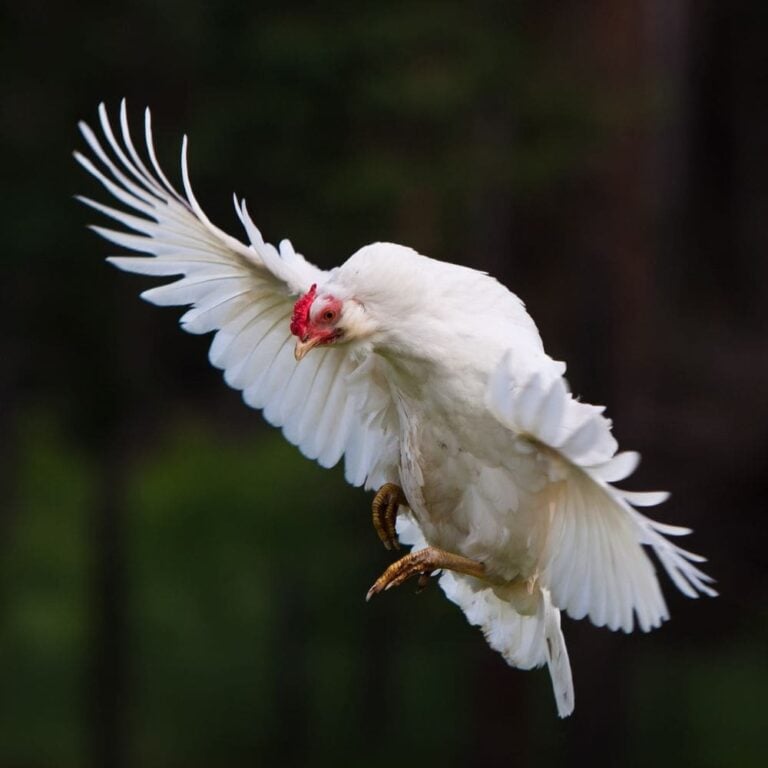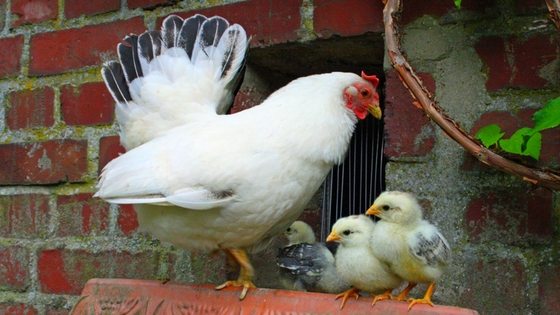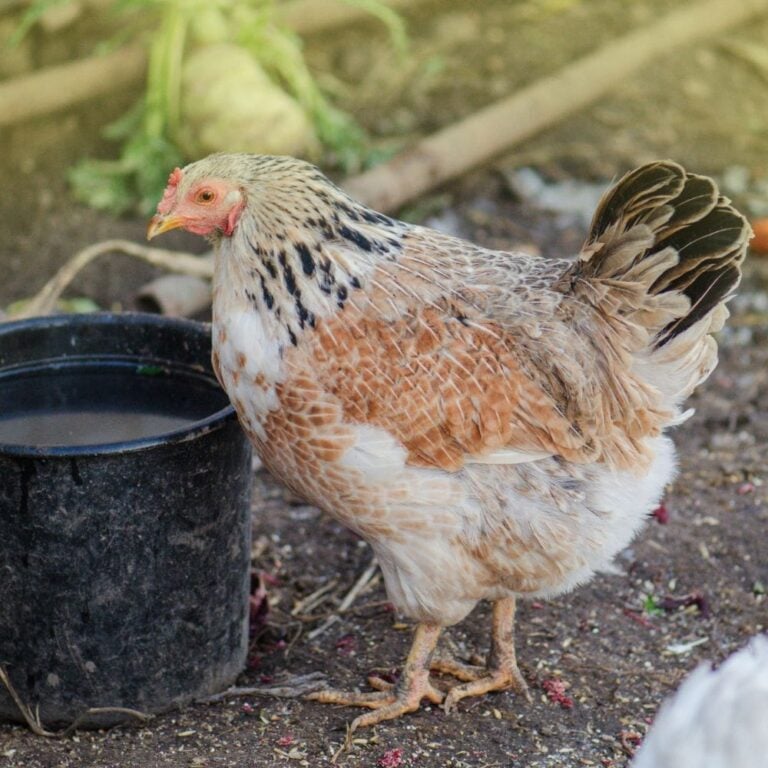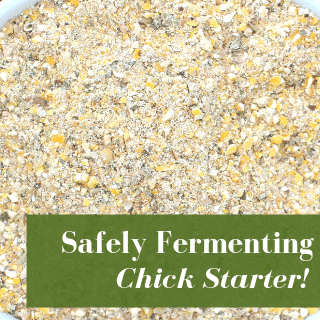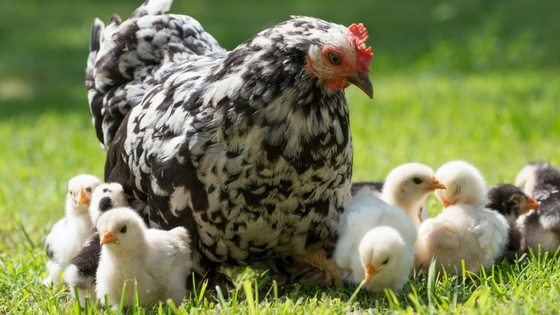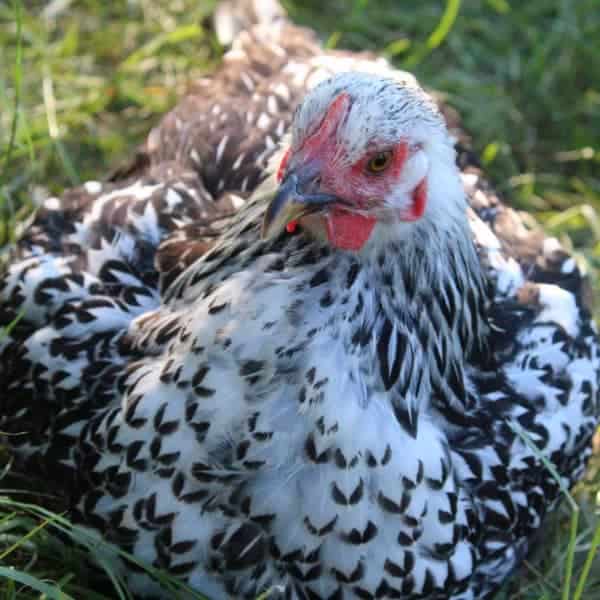Did you know humans have raised poultry for meat and eggs for almost 10,000 years? Heritage breeds play an important part in our history and can continue in our future if we preserve them.
Whether you keep them for practical reasons or just for fun, they are worth looking into.
While I’m a big fan of industrial breeds such as production reds, who lay an egg every day like clockwork – I‘m turning more towards keeping pure-blooded heritage breeds of chickens. In part to preserve a piece of American history that might otherwise be lost.
We also use them in our breeding program, to improve the chicken breeds we’re developing, and so we can start hatching sex links to bring some income to our farm. The genetic ability of heritage breeds is impressive.
According to the Livestock Conservancy:
Heritage breeds are traditional livestock breeds that were raised by our forefathers. These are the breeds of a bygone era, before industrial agriculture became a mainstream practice. These breeds were carefully selected and bred over time to develop traits that made them well-adapted to the local environment and they thrived under farming practices and cultural conditions that are very different from those found in modern agriculture.
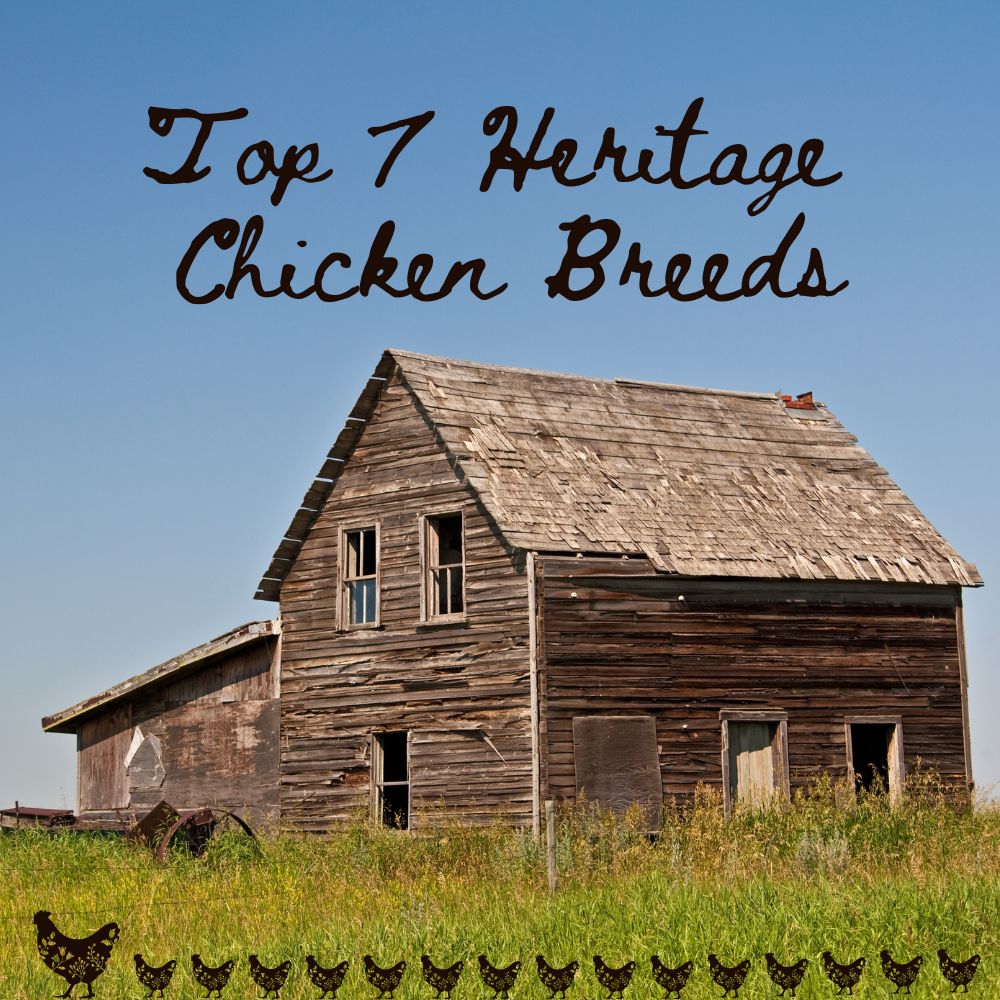
Table of Contents (Quickly Jump To Information)
Why Bother With Heritage Chicken Breeds?
One advantage to heritage breeds is, when it comes to hatching them, you know what you’re going to get from the heritage egg.
After all, the purpose of breeding purebloods is the genetic traits are predictable. Generation after generation of heritage chicken breeds show the same traits, whether it’s a certain color egg, a specific size, or plumage.
Centuries ago, when heritage chicken breeds were first developed in America or otherwise introduced to our country, for the most part, they were developed as dual-purpose breeds.
Buff Orpingtons, for example, were specifically bred so they would consistently produce eggs but were also white-skinned, making butchering easier, and were a hefty weight.
7 of The Top Heritage Chicken Breeds
There are quite a few to choose from but let’s take a look at 7 of the top heritage chicken breeds. We will also cover why they are great for any size homestead (or backyard flock).
1. Orpingtons
The first of the heritage chicken breeds we’ll look at are Orpingtons. We personally keep several Buff Orpingtons on our homestead, and they lay wonderful light brown eggs regularly.
They’re a great dual-purpose chicken, bred for both meat and eggs. If you’re off-grid or simply don’t want to incubate eggs, they’re particularly advantageous because the hens like to sit on eggs. This makes them ideal for a sustainable flock of heritage chicken breeds.
Orpingtons come in several colors, including black, white, buff, blue, and splash. The buff Orpington is the most commonly seen.
Orpingtons have a great history and were developed in 1886 by an English man named William Cook, a professional coachman.
He developed the Black Orpington to meet the need for a dark chicken that could be exhibited in London at shows without soot showing (London was a dirty place in those days!). They also met market demand for a chicken that was large, white-skinned, and good for the table.
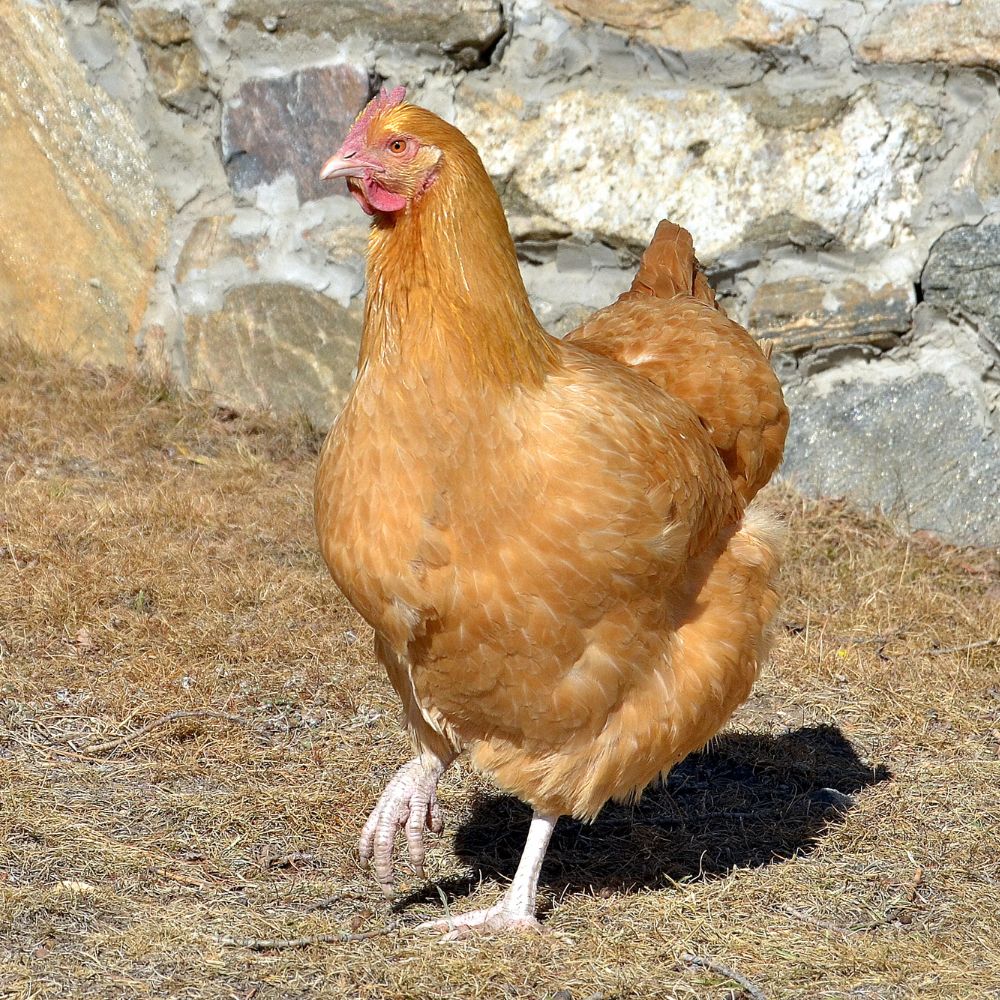
These heritage chickens are named after the town they were developed in, Orpington, and were produced by crossing Minorcas, Langshans, and Plymouth Rock heritage breeds.
Later, the buff color was developed, and only the original colors are accepted by the American Poultry Association.
As a heritage chicken, Orpingtons are perfect for any homestead or backyard flock because they grow to good harvestable weight, lay large brown eggs regularly, and are attractively colored birds.
2. Rhode Island Reds
Rhode Island Reds (RIR) is one of the oldest heritage chicken breeds in America. When it comes to RIR, there are industrial strains, bred for egg production as well as heritage strains.
For this article, we’re talking about the heritage strain, which looks different from an industrial chicken strain.
According to the Livestock Conservancy, heritage Rhode Island Reds are listed as “recovering,” thanks to efforts by breeders and homesteaders who want to preserve this piece of Americana.
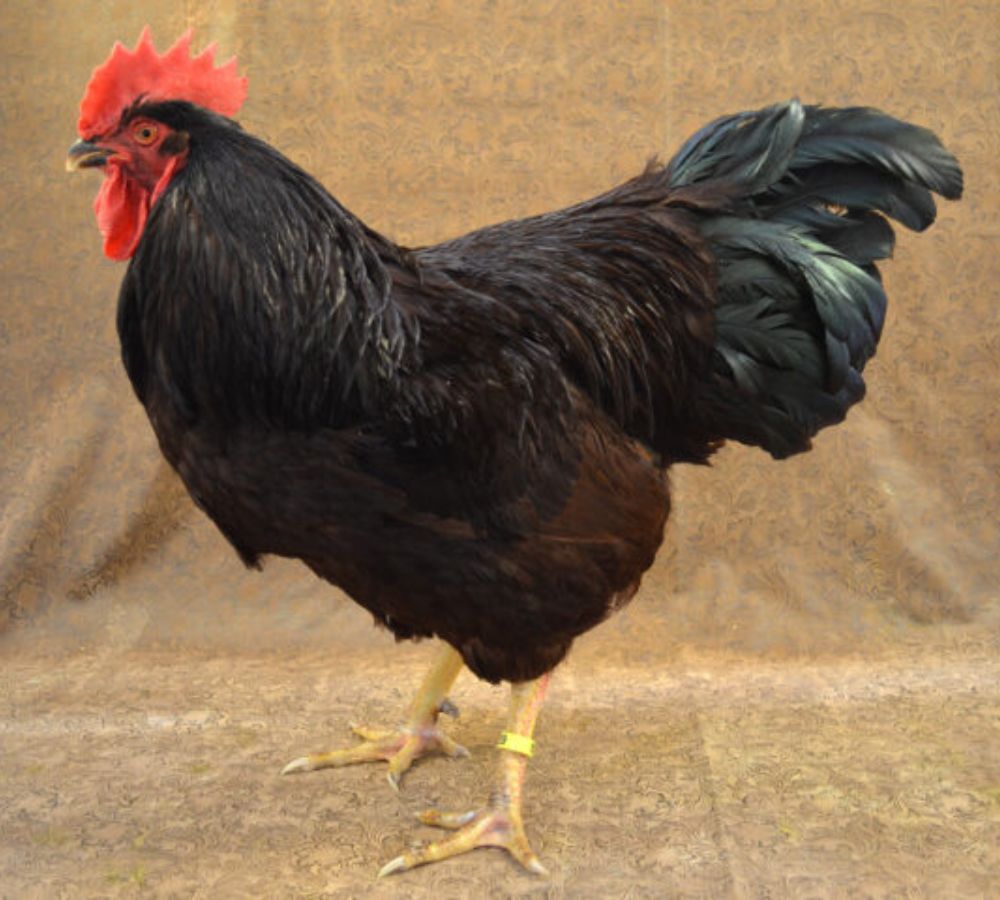
Directly descended from the heritage chicken breeds our ancestors developed in Rhode Island and Massachusetts, Rhode Island Reds originated in Adamsville, which is a village in Little Compton, Rhode Island.
They are larger than industrial strains and perfect for either the table or for their eggs. They’re also the foundation for more modern “breeds” such as Production Reds and Sex Links.
If you want to raise heritage Rhode Island Reds, do your homework to make sure the bloodlines are indeed true to this heritage chicken breed.
These heritage chickens are hardy birds that weather winter well and are great with children.
3. Delawares
Delawares are next on our list of heritage chicken breeds. They’re beautiful, striking birds that make a gorgeous addition to any backyard flock. Plus, they are excellent egg layers.

This heritage chicken originated in Delaware in the 1940s by crossing Barred Plymouth Rock roosters and New Hampshire hens. They’ve been important in creating modern broiler breeds, and for a while were the most popular meat chickens in the Mid-Atlantic area largely because of their color.
Delawares are critically endangered according to the Livestock Conservancy. Their usefulness as broilers has been surpassed by Cornish Crosses, but they still make a wonderful dual-purpose bird for any homestead.
We have a couple of Delaware roosters on our farm and they’re friendly, hardy birds that grow well.
4. Plymouth Rocks (Barred Rocks)
The fourth on our list of heritage chicken breeds are Plymouth Rocks, also popularly known as Barred Rocks.
The Plymouth Rock originated in America in the middle of the 19th century and is one of the most popular heritage breeds in part because the barred birds are very showy and beautiful.
They’re also excellent egg producers. This type of heritage chicken was first exhibited in Boston, Massachusetts as a breed in 1849 and was developed from hybrid chickens with Spanish, White Cochin, Dominique, Buff Cochin, Black Java, and Brahma bloodlines.
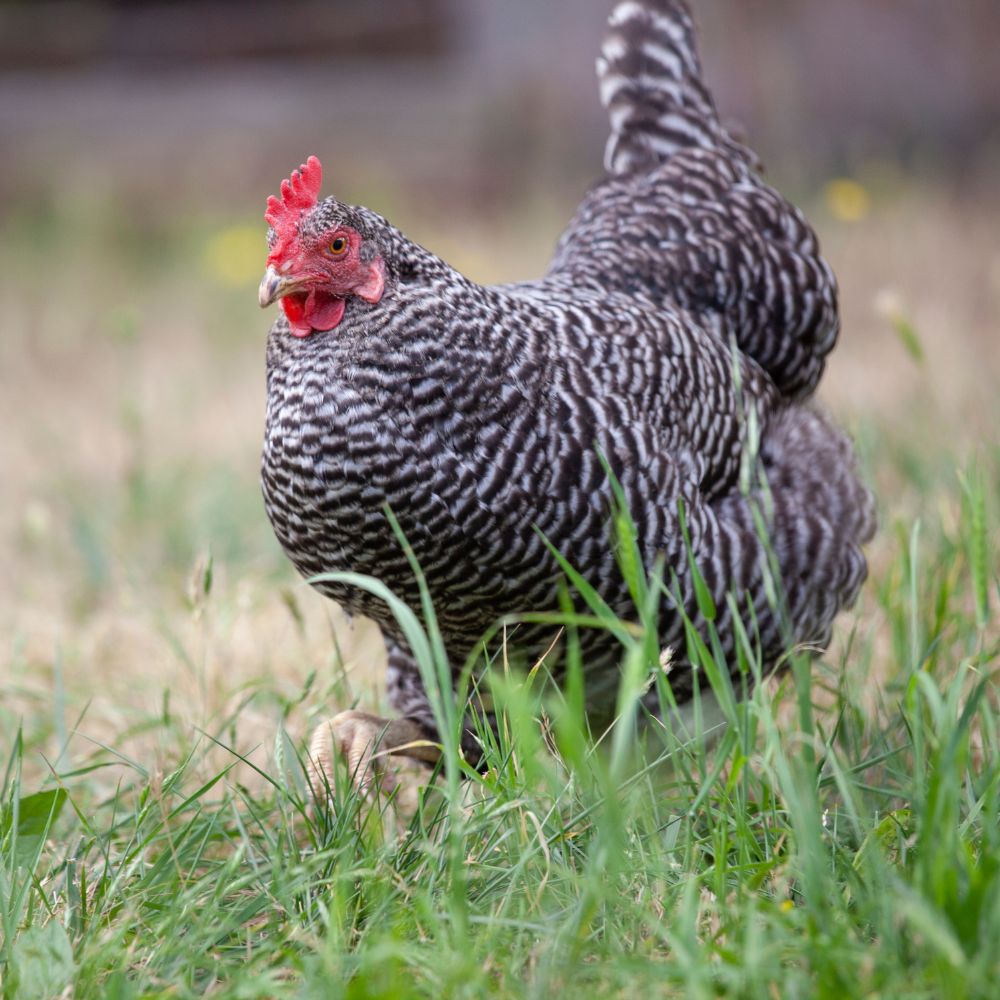
And the original Plymouth Rocks were of the barred variety.
According to the Livestock Conservancy, the Plymouth Rock seemed to have disappeared for 20 or so years until 1869 when this heritage breed appeared at a poultry show in Worchester, Massachusetts.
The Plymouth Rocks we know today are heritage offspring of the second set of Plymouth Rocks. This heritage breed was accepted into the American Poultry Association’s Standard of Excellence in 1874.
The Plymouth Rocks we have on our farm are friendly birds. We are raising them to breed both purebloods and black sex links.
I like them because they lay nice brown eggs consistently and they’re popular meat birds among our neighbors.
5. Speckled Sussex
Sussex chickens have historically been raised as a dual-purpose breed, although many people today raise them as beautiful pets. There’s a standard-sized chicken and a bantam variety. Can you imagine how adorable the bantam variety is?
Speckled Sussex chickens are wonderful to own! They have “big” personalities, and ours are at the top of the flock. They’re curious, the first to check out new situations, love environmental enrichment, and are intelligent pets.
This breed of chickens, as it exists today, has been around since the mid-1800s, and originated in the county of Sussex, England, hence the name of the breed.
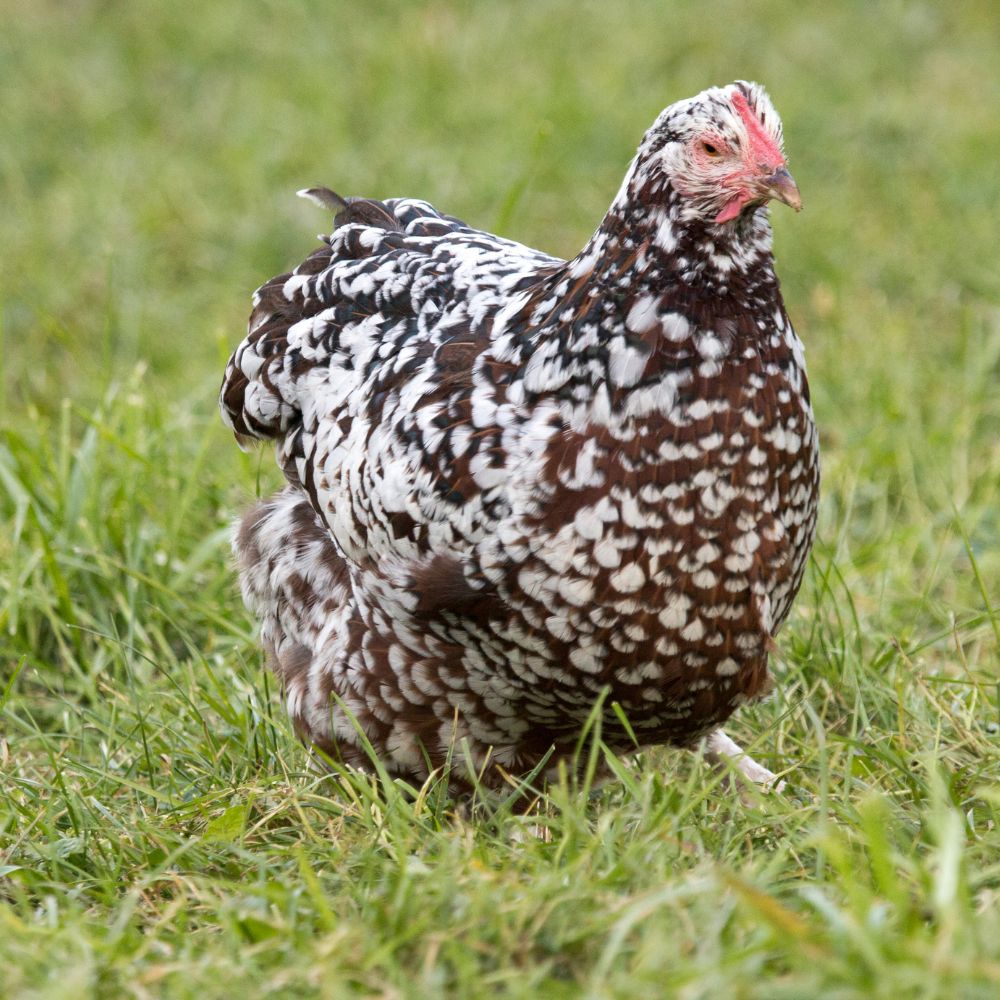
While each color variety has its own individual influences, the Sussex chicken is largely influenced by Brahmas, Cochin, Dorking, among other breeds.
Roosters can weigh up to 8 pounds while hens weigh about 6 pounds.
6. Australorp
Here’s a quick history lesson on our sixth heritage breed – the Australorp. Back in the early 1900s, William Cook’s Orpingtons were taken from England to Australia. They were then crossed with Rhode Island Reds with the purpose of refining their egg-laying ability.
This refined version of the Orpington, became what we know today. They were imported into America in the early 1920s. The chicken powers that be had a hard time figuring out a name for this breed – they were called everything from Australian Utility Black Orpingtons to Australs.
But the final name ended up as Australorp which is a mixture of “Australia” and “Orpington.”
These birds are so popular because of their excellence in dual-purpose lives: males make excellent meat chickens weighing in at up to a whopping 10 pounds. These are LARGE birds! The female birds are excellent layers, with an average production run of about 300 eggs per year. Do you see the common link? EXCELLENCE!
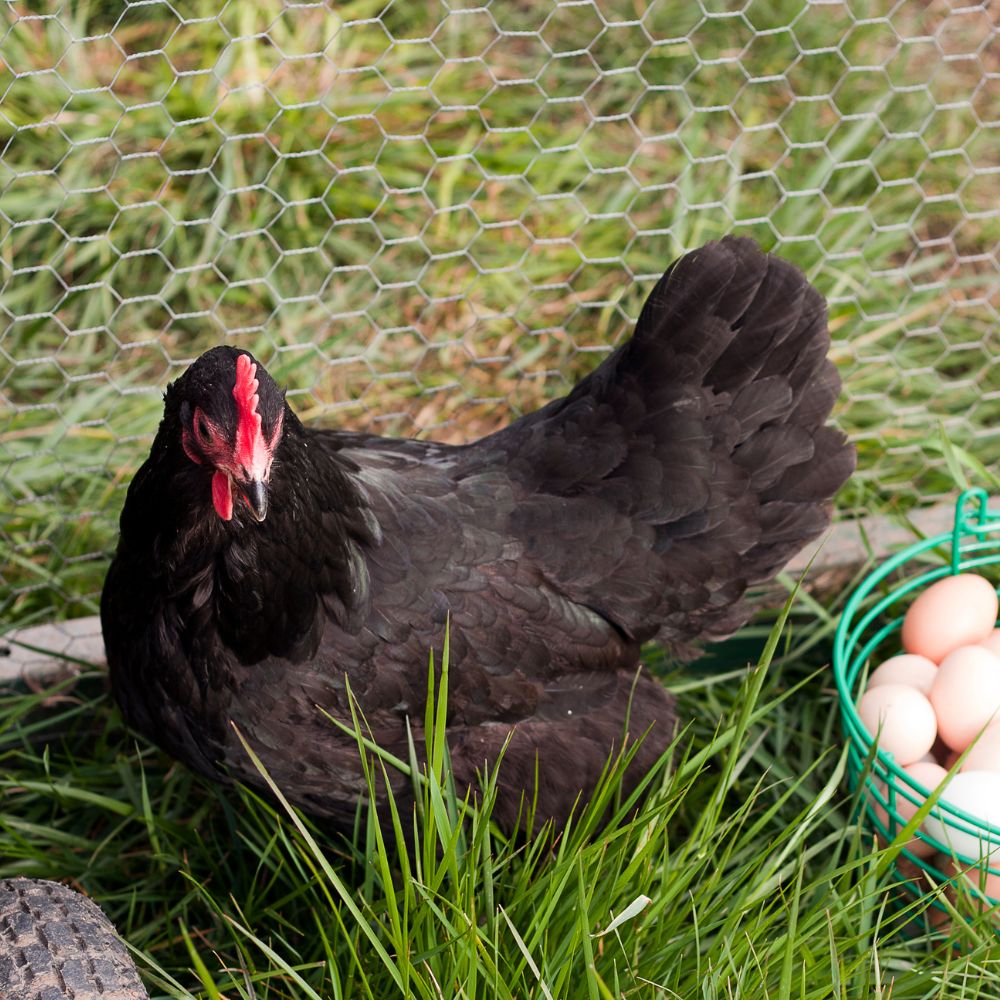
7. Sultans
Now for the last heritage breed we will be covering in this article – the Sultans breed.
Not all heritage breeds are dual-purpose superstars. There are others that are pretty much just pets. Sultans is one that fits into that category.
I’ve never kept Sultans on our homestead, but after learning about them, I would like to!
Sultans are one of several heritage chicken breeds that are listed as “in danger of extinction,” according to the Livestock Conservancy.
They’re natives of Turkey, where they were likely developed as ornamental birds for the gardens of the Sultan.
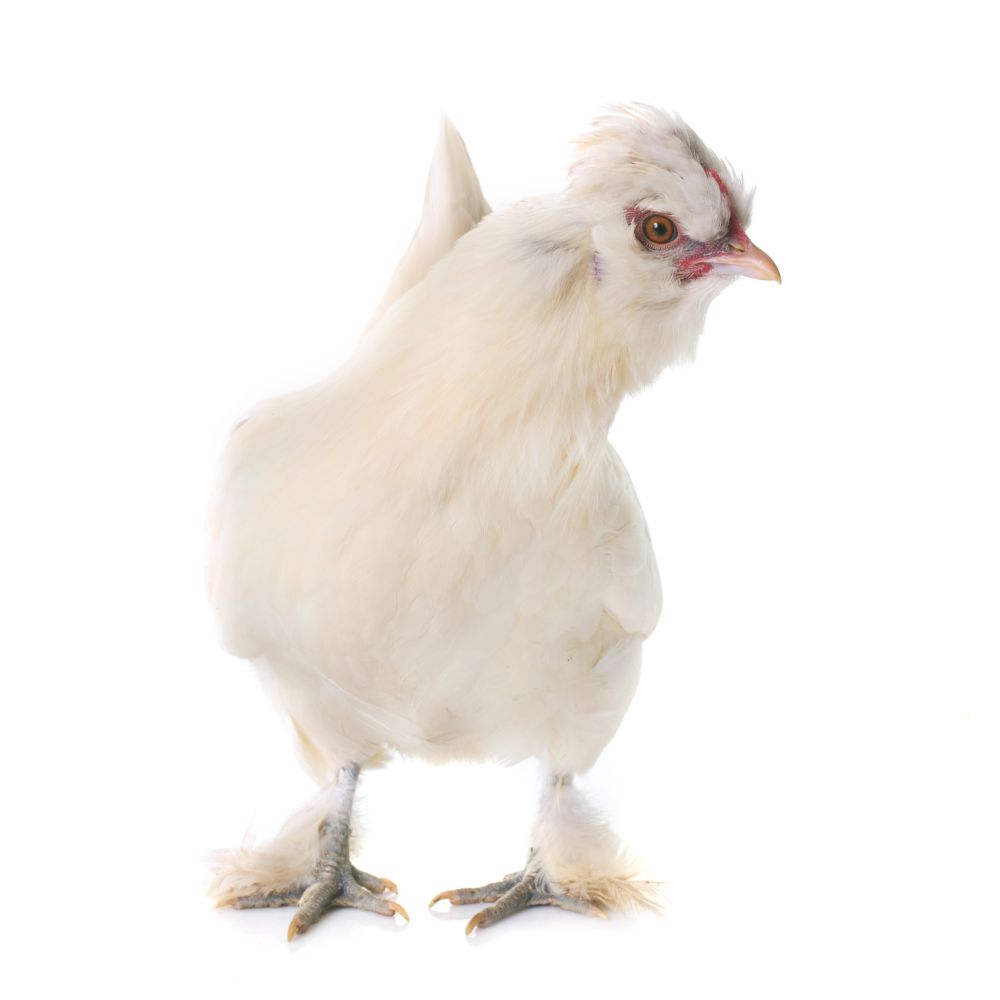
They have been rare since they arrived in England in 1854 by way of a friendship. You see, Mrs. Elizabeth Watts of Hampstead, England, the editor of the Poultry Chronicle (a British publication) received heritage chickens from a friend living in Constantinople (now Istanbul).
Their actual name is Serai Taook, which in Turkish means Sultan’s Fowl, which is where their name is derived.
They’re very pretty ornamental birds, possibly the most visually appealing among the heritage chicken breeds.
They don’t lay very well, but you might not be looking for a high-efficiency bird and just want to enjoy friendly companions!
Helping to save heritage chicken breeds is a wonderful pursuit for any homesteader or chicken lover. These breeds are a piece of American history, and we’re happy to continue preserving them!
Caring For Your Heritage Chickens
- Give them lots of love 💕
- Provide fresh, clean water daily
- Treat them special with herbal dust baths (that repel parasites!)
- Don’t skimp on quality – serve them high-protein chicken feed
- Provide adequate shelter
Summary
Our grandparents and great-grandparents had a lot of wisdom. Although new and shiny things can have a certain appeal, so can the old classics.
Preserving our history, both in big and in small ways, is important. For those of us that love critters, and chickens in this case, preserving these heritage breeds is hardly a sacrifice. It’s easy and fun. So…what are you waiting for?
Maat van Uitert is a backyard chicken and sustainable living expert. She is also the author of Chickens: Naturally Raising A Sustainable Flock, which was a best seller in it’s Amazon category. Maat has been featured on NBC, CBS, AOL Finance, Community Chickens, the Huffington Post, Chickens magazine, Backyard Poultry, and Countryside Magazine. She lives on her farm in Southeast Missouri with her husband, two children, and about a million chickens and ducks. You can follow Maat on Facebook here and Instagram here.


